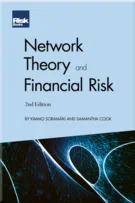Preface
Preface
Preface
Why Systemic Risk Oversight Matters
The Bottom-up Approach to Systemic Risk
Fundamental Information and Firm-level Risk
Extracting Risk Measures from Credit Derivatives and Bonds
Equity-implied Methods and Risk-neutrality Transformations
Systemic Risk Measurement: Statistical Methods
CoRisk: Quantile Regressions in Practice
Balance-sheet Network Analysis
The Portfolio-based Approach to Systemic Risk
Advances in Modelling Systemic Risk in Financial Networks
Agent-based Models of the Financial System
The Regulation of Systemic Risk
The Effectiveness of Macroprudential Policy
Epilogue
References
Abbreviations
Test chapter
Both the risk management profession and the financial supervisory and regulatory framework are undergoing deep structural changes brought on by the global financial crisis of 2008. Standard market and regulatory practices, deemed appropriate before the crisis, have since proven to be the opposite. A key shortcoming was that risk management and prudential measures focused too narrowly on financial institutions as stand-alone firms. In fairness, it has long been recognised that systemic risk, or the collapse of the financial system following the failure of one institution, is a potential threat to the smooth functioning of markets and the economy. However, until the crisis erupted there were not strong enough incentives to overhaul market practices and the regulatory framework to deal explicitly with systemic risk.
The crisis brought an end to complacency. Nowadays, market analysts, regulators and supervisors alike face the challenge of evaluating the risk profile of financial institutions in a systemic context. Such analysis can no longer be limited to the risk of an institution on a stand-alone basis. Rather, the focus has shifted to understanding what role they play within the
Copyright Infopro Digital Limited. All rights reserved.
As outlined in our terms and conditions, https://www.infopro-digital.com/terms-and-conditions/subscriptions/ (point 2.4), printing is limited to a single copy.
If you would like to purchase additional rights please email info@risk.net
Copyright Infopro Digital Limited. All rights reserved.
You may share this content using our article tools. As outlined in our terms and conditions, https://www.infopro-digital.com/terms-and-conditions/subscriptions/ (clause 2.4), an Authorised User may only make one copy of the materials for their own personal use. You must also comply with the restrictions in clause 2.5.
If you would like to purchase additional rights please email info@risk.net








